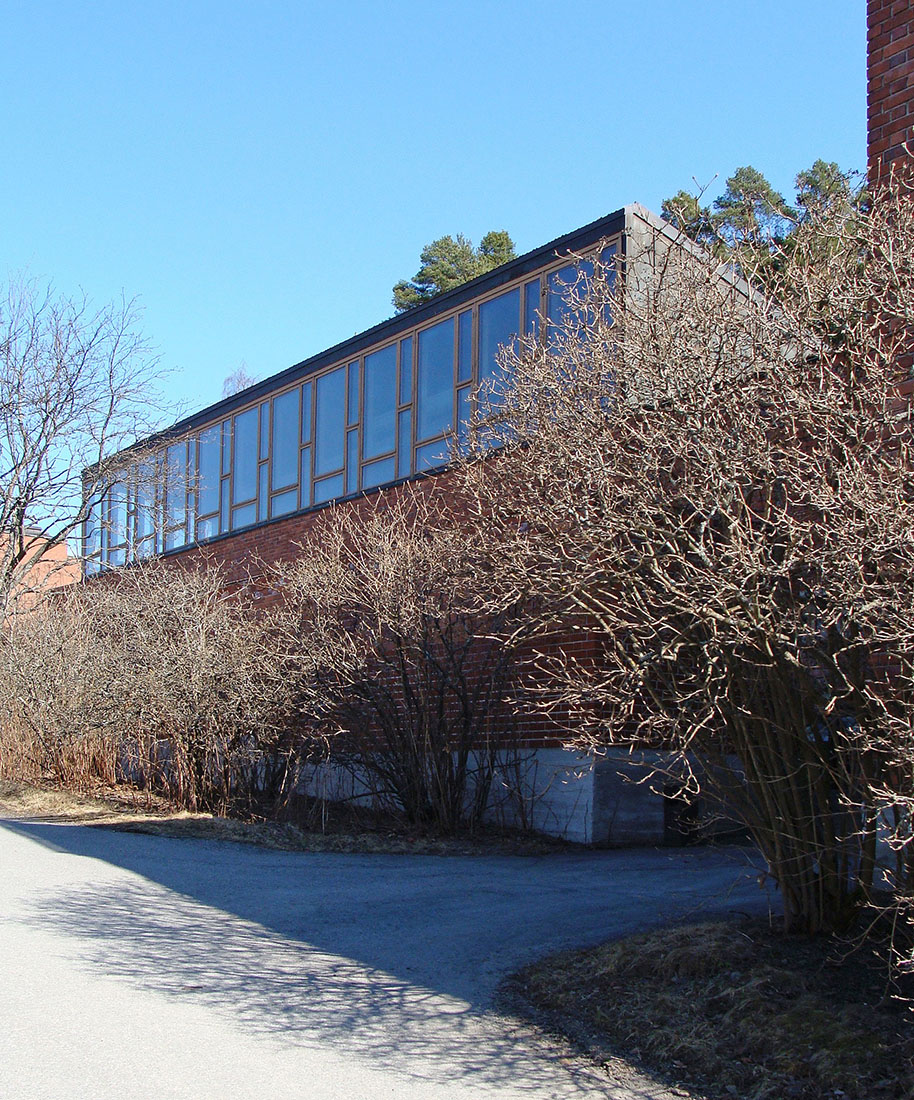 |
 |
 |
 |


Lythy and Lozzi Cafeteria
Seminaarinkatu 15, Jyväskylä
1952 - 1953
In 1950 Alvar Aalto took part in the general planning competition for the Jyväskylä Institute of Pedagogics. His proposal 'Urbs' was awarded the first prize at the end of May 1951, and the achitect was immediately commissioned to begin working on the plans of the various buildings. His proposal, reminiscent of some of his earlier projects, consists of several individual buildings, which are arranged in a U-shape, respecting the existing buildings of the complex. The central space, which is framed by the complex, is accessible only for pedestrians. Located in a ridge of pine trees close to the centre of the town, Alvar Aalto designed another piece of architecture in tense relation to the surrounding nature. Construction of the complex started in 1953, and within three years a major part of the complex was concluded, even if Alvar Aalto worked for several further years to design various buildings and additions. All buildings of the Jyväskylä Institute of Pedagogics expose Alvar Aalto's emphasis on materiality, combining white walls with wood, brick and glass. The whole complex contains buildings for various functions and was initially built for teacher training. In 1966 the college of education became a university.
In their realized form, the two refectories for teachers and students are arranged in a straight line on a downward slope facing the sports field. This layout is related to the intention of the competition proposal 'urbs', but also introduces several changes and simplifications. The teachers cafeteria is called Lyhty, what means lantern, and resembles a small Greek temple. This construction, which is located nearest to the main building, was originally used as a techers' refectory and meeting room. The simple and rectangular façades are structured by a sequence of light granite columns and large windows, allowing views to the sports field and other areas of the campus. The building is differentiated from the other red brick buildings by its light colour, emphasizing its special character as an independent building. Despite its small size, Lyhty has a strong impact on its surroundings. In front of the building are some terraced walls, linking the planted vegetation with the interior of Lyhty. The interior of Lyhty contains a main dining area, a small seating area with round tables and originally featured an open fireplace. Kitchen and entrance hall to the teachers refectory are located in the adjoining student refectory. Already soon after completion this building was used mainly as a meeting space, and staff dining was moved to the Lozzi.
The student cafeteria Lozzi, its name stems from the pedagogue J. H. Pestalozzi, is adjacent to the previously described teachers cafeteria. The volume is divided into two floors, with a dimly lit entrance area on the ground floor. From there one ascends to the brightly lit dining floor. Originally there was a foyer at the top of the stairs, with refectory areas on both sides of it. The L-shaped plan of the upper storey was mainly occupied by the large dining hall. On the exterior the lower part of the Lozzi towards the inner court area appears as a large wall made of red brick, while the upper part is made of large windows below the slanted ceiling. This large window is placed at such a height, that it is impossible to have a view of the court, but allowing plenty of natural light to enter the cafeteria. The dining space has its connection to the environment on the opposite side, oriented to the exterior of the campus. The L-shaped plan creates a intimate courtyard with characteristics of an interior space. This terrace is used for dining in summer time.